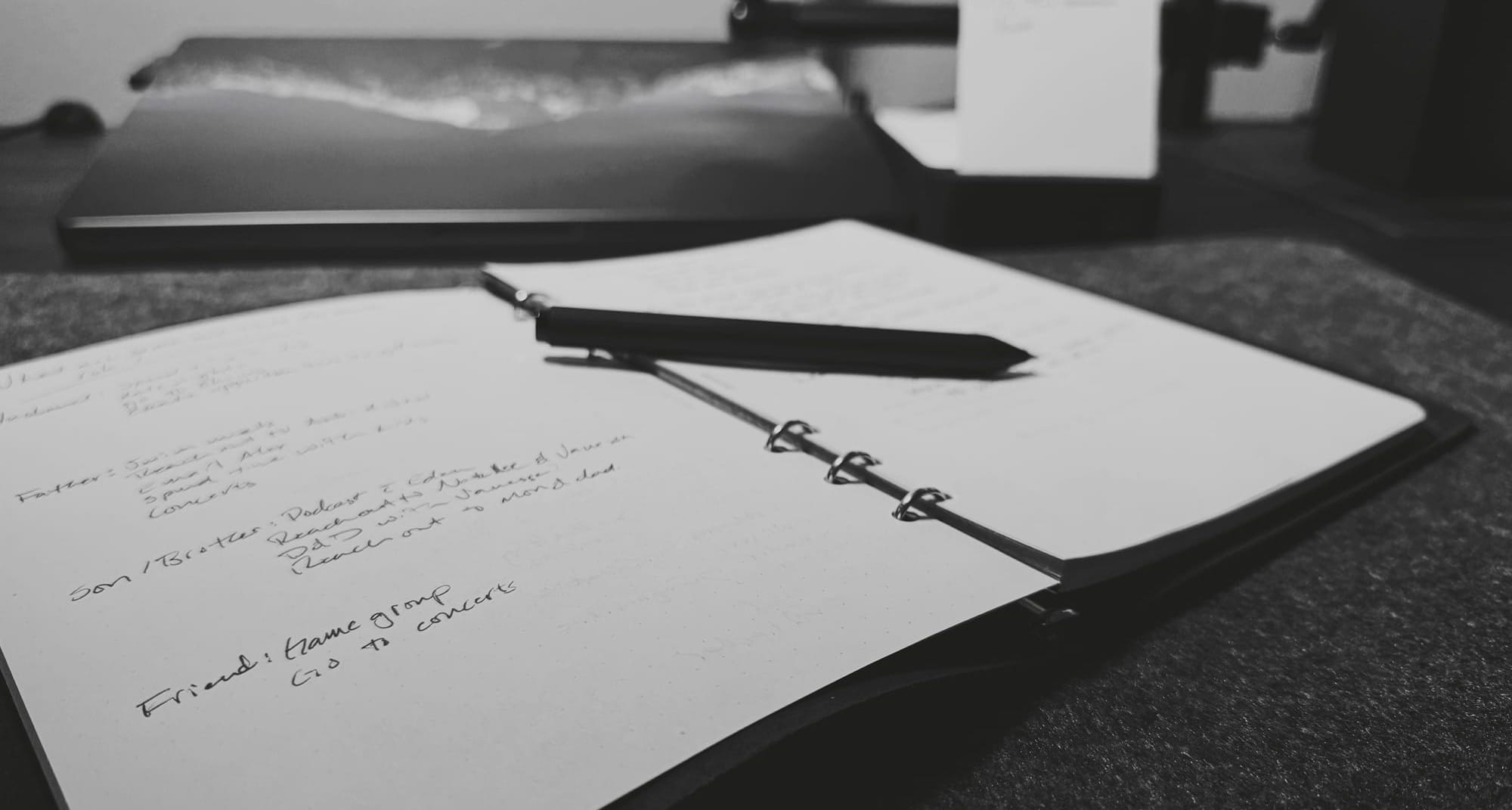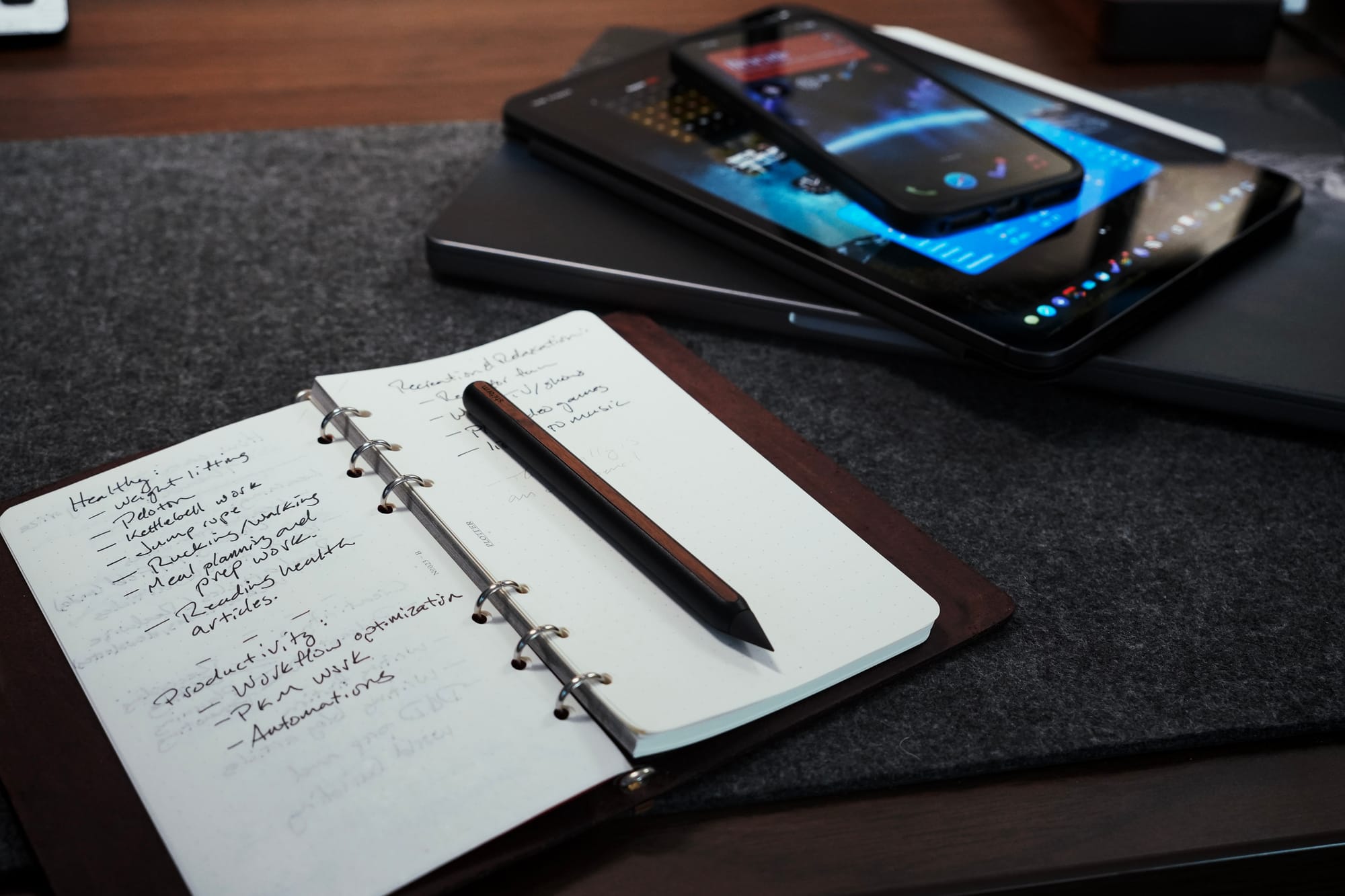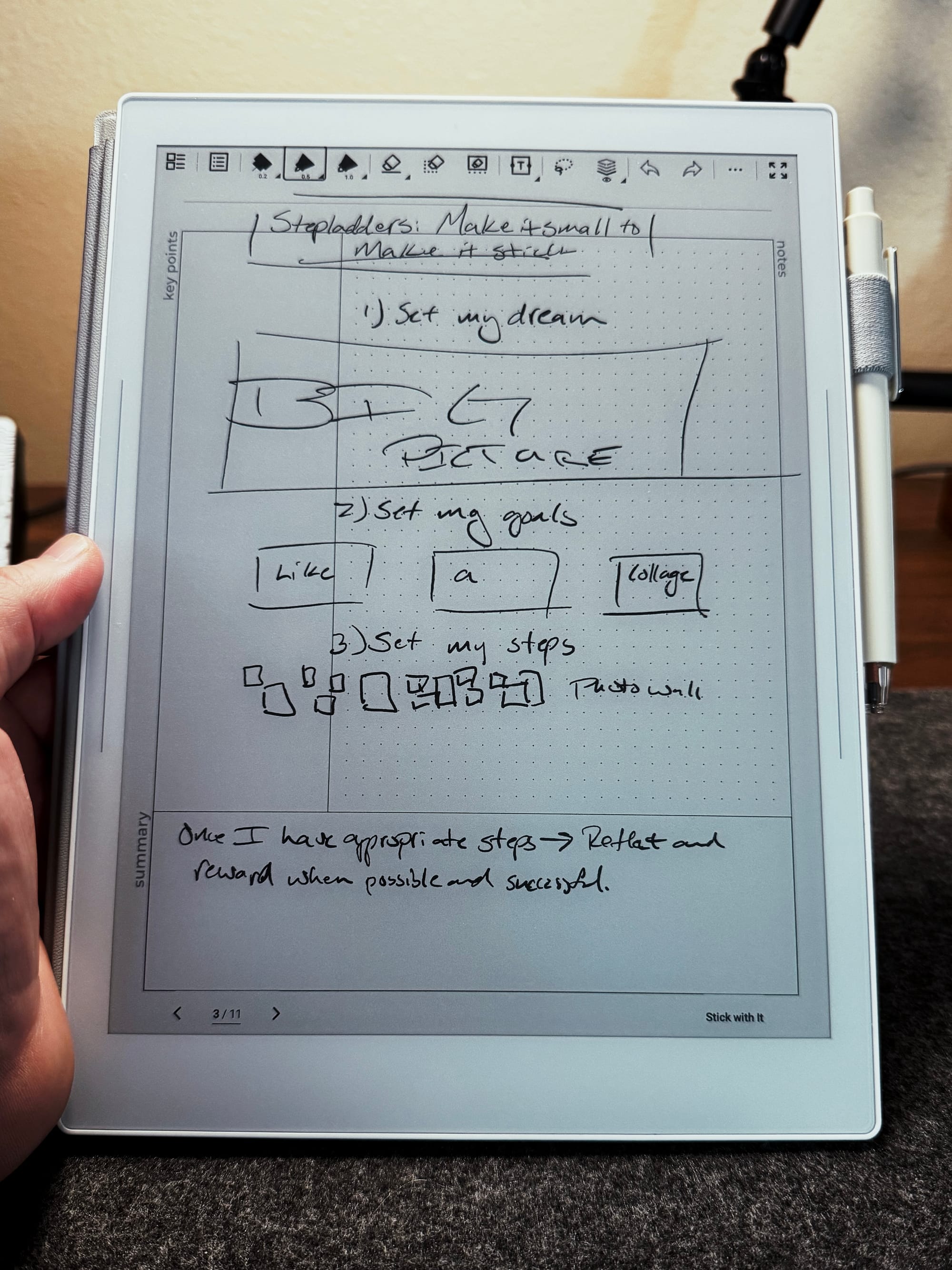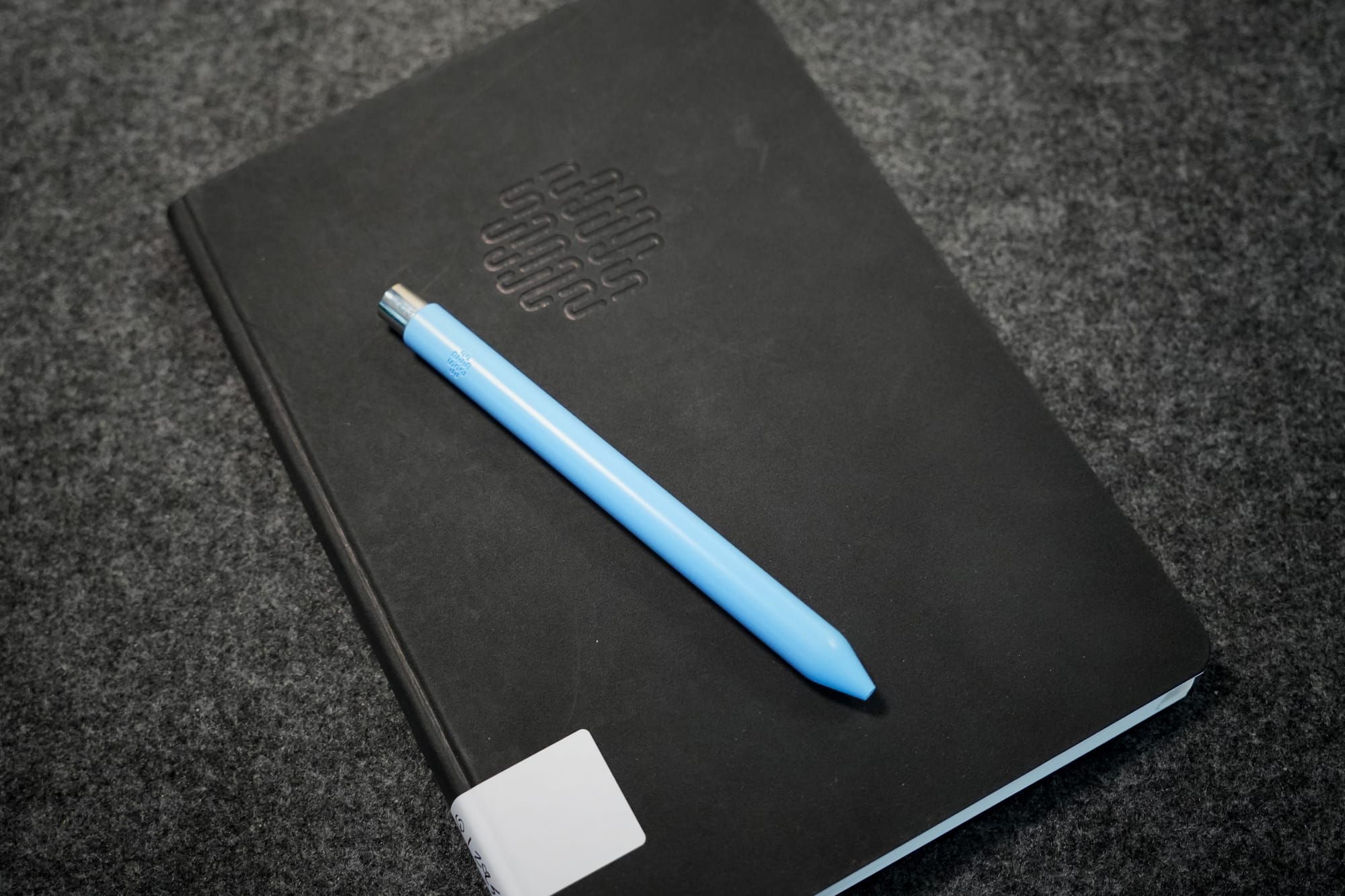Slow Words, Deeper Thinking

"We shape our tools, and thereafter our tools shape us."
—Father John Culkin, S.J.
We live in an unprecedented age. Gadgets surround us, tools ready to create, learn, grow, communicate, edify, and connect.
But mostly, they are tools to waste our time and dumb us down.
The research bears this out. These apps, these phones, tablets, and computers, are all designed to engage us. That's what is wanted, our constant engagement. And it seeps into everything.
Often, the only way to break free of this pervasive engagement is just to unplug.
I love gadgets. Always have. Electronics of all types fascinated me when I was younger. I cannot even begin to describe my excitement the first time I got a Palm Pilot. I tried to push it far beyond its capabilities, part of me wanting to use it for everything.
But Graffiti was limited. It worked well in a pinch, but there was something it simply couldn't compete with. I thought I was living in the future, but it couldn't compete with something that the Egyptians figured out millennia ago.
They figured out the magic of pen on paper.
Or at least the contemporary facsimile of that.
And you know what? That has stuck with us to this day. I'd even argue that old-fashioned writing has made a resurgence in the last few years.
And deservedly so.
I've written three novels.
The first novel was written in Scrivener on my iPad Pro. The second, on a MacBook Pro using the full version of Scrivener. The third? I went with Obsidian. Something about each tool left me wanting something different. None of them was exactly what I was looking for when it came to my creative writing.
But.
The truth is, years and years ago, I started my true first novel. It was written in a college-ruled, Five-Star notebook, with a mechanical pencil in hand.
Something about that experience has stuck with me to this day.
With so many tools at our disposal, why does writing by hand stick around?
It is slower, more difficult to edit, and severely limited when compared to digital note-taking or writing. When I started medical school more than 20 years ago, we were all required to have laptops that we could use to take notes on during lectures. We were provided the PowerPoint presentations as PDFs, and there may have been a version of Adobe Acrobat that made its rounds through the class that would allow us to type directly on the PDFs.
The need for the laptops to take notes was a non-negotiable. We either bought our own or the school bought one for us (and billed us, of course).
I fear they did us a grave disservice.

The research is clear.
Handwriting has numerous clear benefits over typing, and the comparison between AI-generated notes doesn't even warrant further discussion. Yes, there are drawbacks, and there is a time and place for typing, dictation, and even AI-generated notes.
But the purpose is the key.
Want to improve your recall of the information you are taking notes on? Write by hand if possible. Want to improve your understanding of the concepts and activate more cognitive centers of your brain? Write and sketch by hand.
It's true. Pam Mueller of Princeton and Daniel Oppenheimer at UCLA both clearly demonstrated that handwriting requires activation of more areas of the brain. It requires greater small motor control and muscle engagement. This activation of multiple parts of the brain enhances understanding and improves memory of whatever subject we are writing about.
That's not all, though.
The process of writing by hand, no matter the content, is naturally slower. While many look on that as a limitation, it is actually one of the greatest strengths.
Being forced to move slowly gives us time to process and form connections while we write. If we are taking notes, we are forced to summarize more simply to keep up. This real-time summarization improves our ability to synthesize the information being shared.
The more free-form nature of handwritten notes also allows for drawing and sketching. One need not be an artist at all to reap the benefits of this type of note-taking. The ability to do much more with our notes than simply put words on the page increases their meaning and our engagement with them.

Writing by hand is simply better than any other option if the goal is retention, processing, and understanding.
At least, that's what the studies have shown.
But in my career, I have learned that studies are great, up to a point.
What really matters, however, is real-life practice. What is the experience of writing by hand? That's been a journey for me.
For years, I had actively moved toward a paperless system. My goal was to keep everything electronically, having my notes, tasks, thoughts, and journal entries synced across all my devices, accessible from any one of them, at any time. I thought that was the modern ideal.
It wasn't.
The convenience was undeniable. But the temptation to get bogged down in adjusting my systems, perfecting my workflows, often overshadowed the actual process itself.
And I was disconnected from the words.
A number of years ago, I decided to try my hand at journaling again, and this time on pen and paper. I purchased a Theme System Journal from Cortex Brand. I started using it daily. I found a nice pen, one that flowed across the paper. One that looked nice, felt good in the hand, and one that I found myself looking forward to using.
Something inside me changed.

The increased friction of journaling by hand slowed me down. My words meant more because I was judicious with how I used them. I thought about what I was going to write before the words formed on the page.
I felt a deep connection to both the words and the process. A connection that was missing from my attempts at digital journaling.
Taking the time to sit at a desk, to open the journal to the correct page, and then to fill each page thoughtfully became a ritual. The feel of the journal in my hands and the gliding of the pen across the paper pulled me in. I found myself looking forward to those minutes, each morning, of solitude and reflection. The physicality of the act strengthened my relationship to it.
It became a time for me and me alone.
No distractions, no notifications of new email. No temptation to pop open a social feed, to check the news, to scroll through my music library, looking for the perfect song for the morning.
Just quiet moments of pen moving across paper.
These moments became such an important respite during my busy days that I found myself seeking other places where that physical process could enhance my work. It is such an integral part of my day that I find I even think more clearly simply having a pen in hand.
That was the beginning of my journey to writing by hand.
And it has been exactly that—a journey.
It now encompasses weekly planning, brainstorming, book notes, and a daily stream of consciousness writing to generate and process the ideas bouncing around in my brain.
My current system differs from that first Theme System Journal. But it is nothing more than an extension of that initial practice. My tools have changed, and may continue to change as I challenge myself to try new things, new ideas.
At the heart of it is that simple concept—a physical pen flowing across a smooth surface, my thoughts gradually taking form, developing a life of their own.
And I wouldn't give that process up for anything.
Handwritten notes and journals really are making a resurgence. There is a good reason for it. It can be as simple, or as extravagant and personal a tool as one wants. If you are reading this and haven't recently sat down with a pen or pencil in hand and just let your thoughts out on a page, I challenge you to do so. You might be surprised at how much a little friction deepens those small moments in your day.
We are all just practicing, imperfectly.